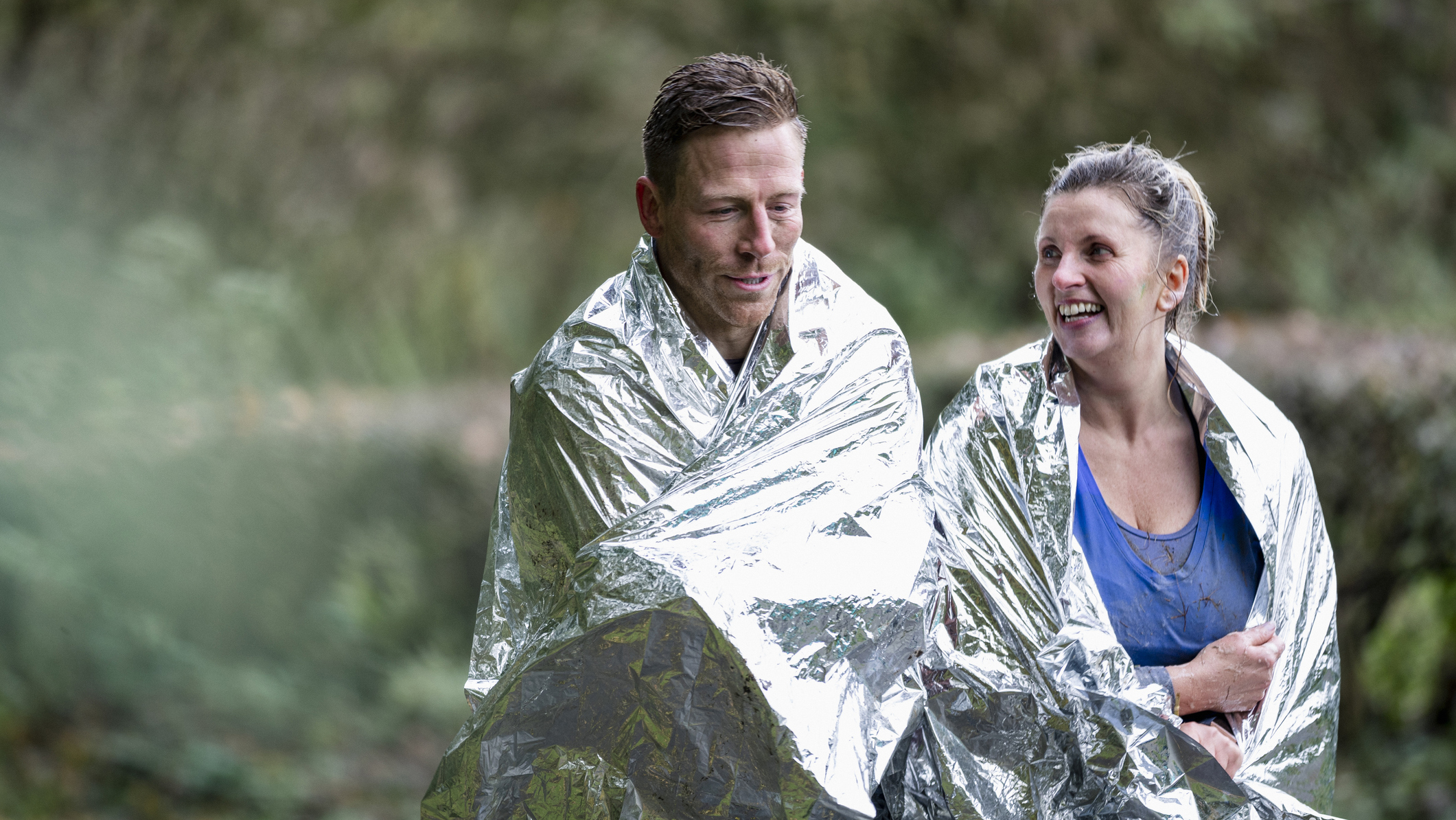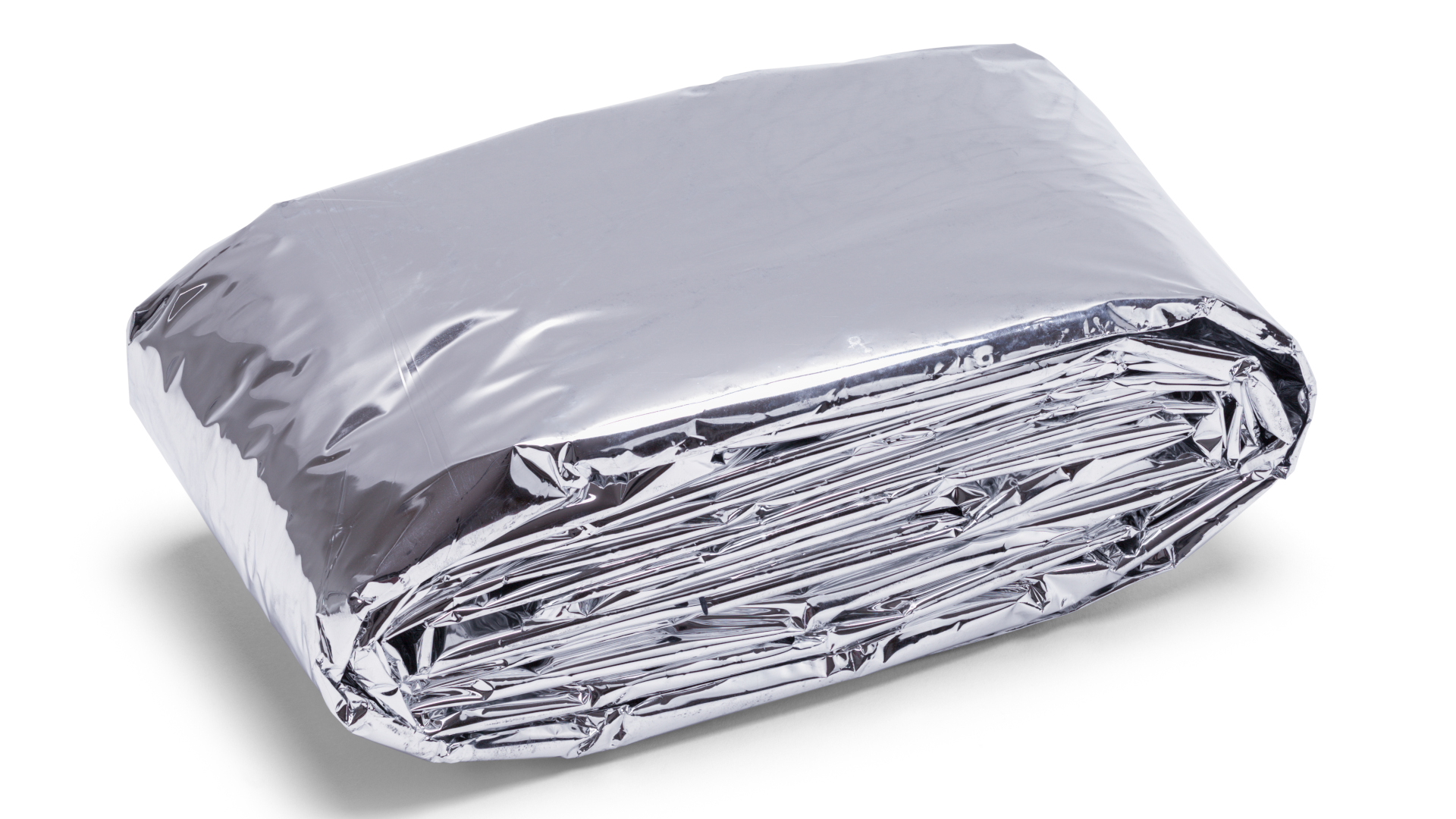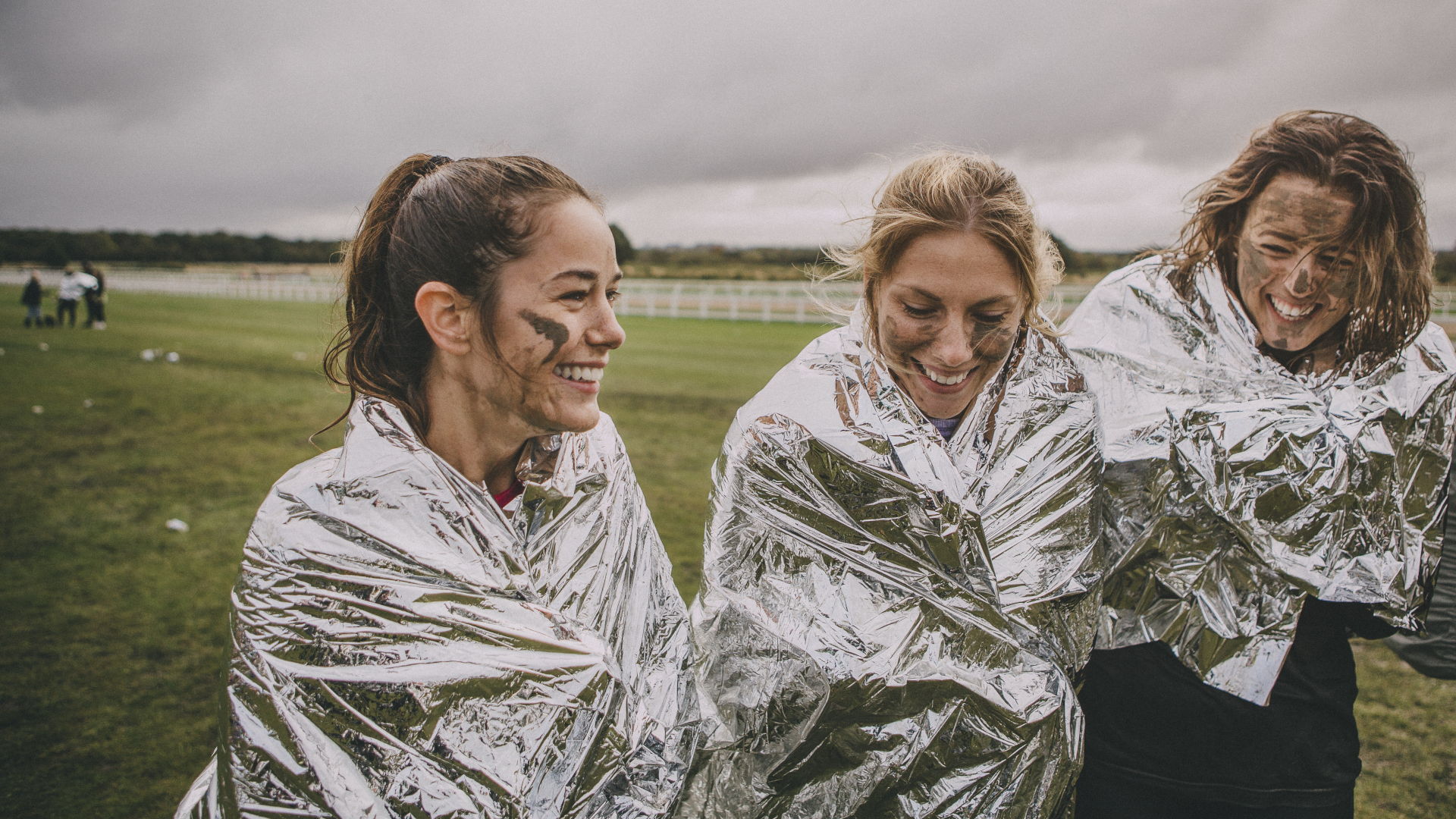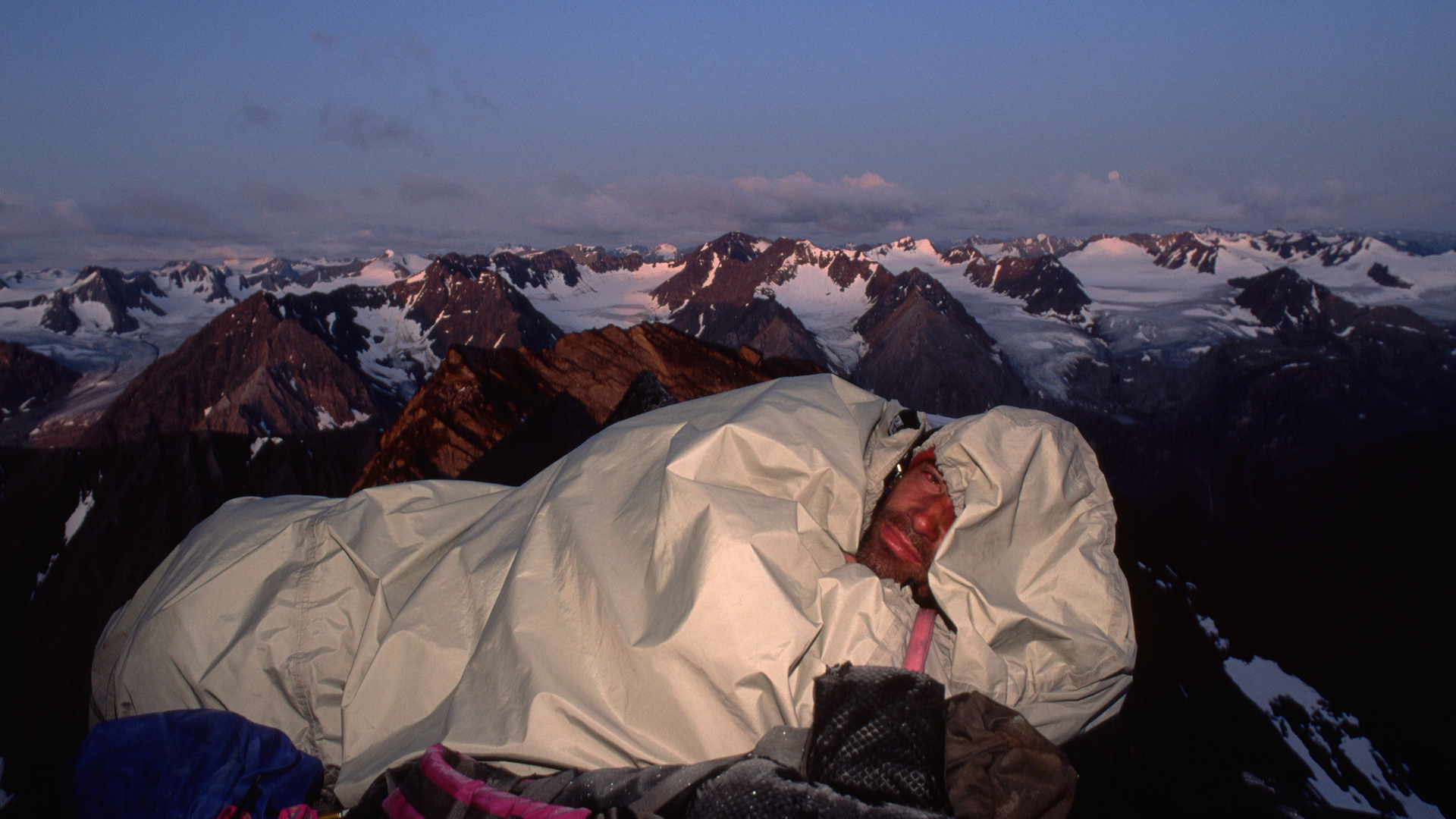
As responsible hikers – and hopefully you are too – we never leave the house without a good first aid kit packed full of items like a bothy bag and an emergency blanket to help us survive an unplanned night in the wild.
An emergency blanket – also known as a space blanket, survival blanket or first aid blanket – is an ultra lightweight and extremely packable metallic blanket made from heat reflective plastic sheeting called Mylar. Usually one side is brightly colored so that rescuers can spot you, and the other side is aluminium, though sometimes both are aluminium. An emergency blanket basically looks a lot like a large sheet of foil and is used by athletes, mountaineers, medics and even astronauts to keep warm in extreme situations.
But how do these flimsy looking sheets actually work and are they effective? We're here to reveal the science and origins behind the emergency blanket, revealing their pros and cons while we're at it.
How do emergency blankets work?
An emergency blanket works by reflecting radiated body heat inwards, stopping it from escaping to the outside and keeping you warm.
It was an idea that emerged in the 1960s and was first used by the space program, hence the term 'space blanket' – more on this in a moment.
If you find yourself in an emergency situation where you’re losing body heat faster than you can generate it – say you’re lost on a long hike, fall through ice or have just completed a very long and gruelling trail run – you’re in danger of developing hypothermia. If you can’t get indoors immediately, you can whip out your emergency blanket from your first aid kit and wrap it around yourself to conserve and increase your own body heat.
Conversely, if you find yourself lost without shade on a very hot hike, you can use your emergency blanket to reflect the sun’s heat off you, by turning the foil side out.
Meet the expert
Origins of the emergency blanket
- Emergency blankets were first developed as part of the space program
- They were designed to deflect the sun's rays and protect vital equipment
- By turning the blanket the other way, scientists realized that they could trap heat

Funnily enough, the original intended function of the space blanket was to keep heat out. The technology was developed by the space program in the 1960s as a means to deflect the sun’s heat and protect spacecraft, equipment and personnel from the heat of the sun. The technology works by using a technique called vacuum metallization which had previously been reserved for mirror making and manufacturing novelty items like tinsel. Metallizing involves applying a metal coating onto a non-metal surface – in this case, a thin layer of aluminium to plastic. The shiny aluminium coating deflects infrared rays, which are invisible rays that we experience as the sensation of heat.
Of course, it didn't take the scientists at NASA long to realize that by turning a space blanket the other way around, you could also keep heat in. Today, these blankets are a hiking essential and staple items in first aid kits. You'll see them at the end of marathons and they're also used by Mountain Rescue and even in large scale disaster relief efforts.
How effective are emergency blankets?
- Emergency blankets reflect up to 90% of your body heat
- They're also waterproof and windproof
- However, they're not particularly robust
- It can be difficult to achieve full coverage
- You can always use your blanket with other emergency items, like a bivy sack

They weigh nothing, take up very little space in a daypack and they could save your life. I don't go anywhere without one.
Alex Foxfield, Mountain Leader
According to Nasa, emergency blankets reflect up to 90% of your body heat, which sounds pretty effective indeed, and they are waterproof and windproof, which adds a lot of value in a pinch. However, there are some issues with emergency blankets that can reduce their effectiveness.
First, they come in different sizes and you need to make sure that yours is big enough to fully cover your body. Next, though they do come in bivy-style designs these days, your basic emergency blanket usually comes in a simple blanket form. This means that they don’t have zips to seal out the cold. You can wrap yourself up in it like a burrito to help, but it won’t seal out as much cold as an item like a sleeping bag. Finally, they’re not particularly robust – they have a short shelf life and degrade easily, meaning if you’ve been carrying yours around for a few years and then disaster strikes, it may not be as effective as you hoped.
If it’s all you have, an emergency blanket will provide you with some warmth until you can get to safety, but for prolonged exposure, it’s actually most effective when combined with other emergency gear. For example, you can use it to line your emergency bivy sack or best sleeping bag, or place it underneath you, foil side up, to act as a groundsheet while you’re huddling inside your bivy or bothy bag. Even better if there's a few of you: use a group shelter to repel the elements and then wrap yourself up in your blanket.
How much do emergency blankets cost?
Emergency blankets tend to be extremely affordable, with the most basic sheets costing as little as a dollar. However, we'd always recommend getting a blanket that provides full coverage, so it's important to shop around. Even then, you probably shouldn't need to pay much more than $15 for one.
Can you sleep with an emergency blanket?
- Emergency blankets are not padded or insulated, so won't provide much comfort

In an emergency situation, if it’s all you have, you should roll yourself up in your emergency blanket to sleep, but it won’t provide much comfort as it’s not insulated or padded so it’s definitely not an appropriate substitute for a sleeping bag and sleeping pad. That said, for the very low cost and small pack size, it’s still worth carrying in your first aid kit for when push comes to shove. For more information on what to do in an emergency situation, you’ll want to read our article on how to build a natural shelter.







